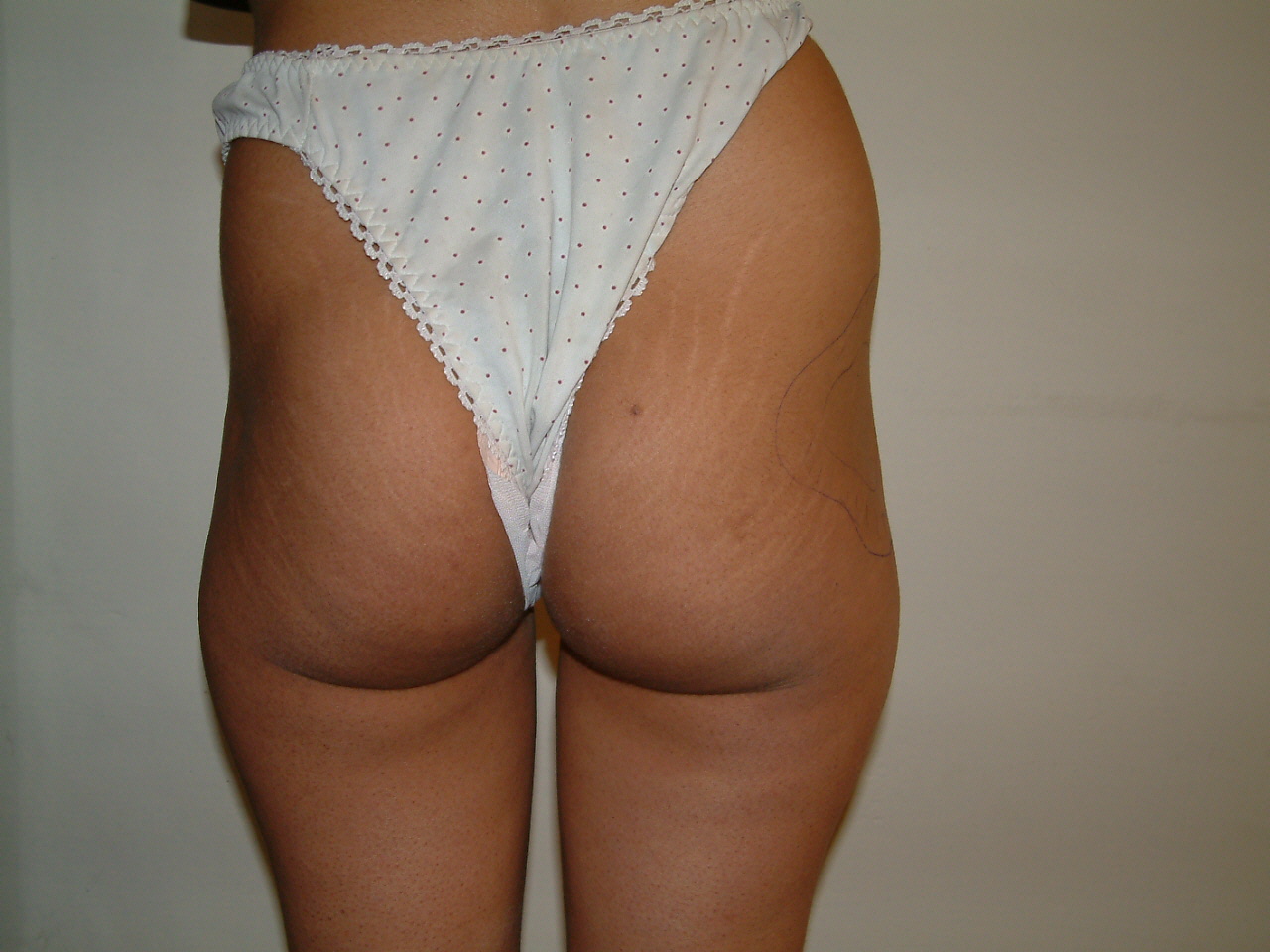|
THE BODY
BEAUTIFUL
WHAT IS NORMAL?
-
Less than 7 or 8 percent whole body fat is abnormal.
-
 More than 15 percent is too much.
-
Pendulous fat is undesirable.
-
Cellulite, abnormal rippling of fat is undesirable.
COMMENT: Fat puts an excess strain on the heart and therefore is unhealthy in excess. Localized areas of fat are commonly unappealing.
SELF-EVALUATION:
-
Grasp the area in question (e.g. thigh). Can you hold the skin and tissue in a bundle in your hand? If so, you're a candidate for liposuction in that area. If not, you just have thick skin or large muscles.
-
Suck in your stomach tight. Does the skin still hang down? You may need a tummy tuck.
-
HOW MUCH CAN BE IMPROVED?
-
There is some fat in skin and muscles that cannot be removed by liposuction. Typically, a 38 inch waist can become a 37 or 36 at best. A 200 pound person can become 195. However, this can still be very strategic fat.
-
Typically two or three liters of fat can be removed with liposuction. Again, this is not much overall volume, but can be very helpful.
-
By a tummy tuck, the lower stomach area can be tightened as desired.
THE OPTIONS: BODY FAT / LIPOSUCTION
Liposuction consists of using a metal suction tube (cannula) to remove the fat from the deep tissues by suction. The suction can be obtained by either a machine or simply by a syringe too.
STANDARD VERSUS TUMESCENT
TECHNIQUE
There are two major categories of techniques for liposuction. The standard is done under general anesthesia and each area is simply injected with a local anesthetic and suctioned.
The second technique, which is somewhat novel, is called tumescent anesthesia, in which a very dilute anesthetic solution is injected into the area of liposuction over several hours. In this case the fat fills up with fluid and can be completely numb with only the use of local anesthesia. Although this method takes longer, there is much less blood loss and the need for general anesthesia is avoided.
WILL I NEED A BLOOD TRANSFUSION?
In routine liposuction, if more than approximately than two liters of fat are anticipated to be removed, the surgeon may recommend an auto-transfusion of blood. In this case, a unit of your blood is drawn off by the blood bank and saved and returned at the time of surgery. By this process, your blood count is maintained.
LIPOSUCTION VERSUS TUMMY TUCK
Some patients have a hanging pouch of skin that consists more of skin than fat. In certain cases, this will not respond to liposuction and must be removed directly. The somewhat extensive surgical procedure to do this involves removing an ellipse of skin from the stomach wall. The scar extends from one hip bone to the other side and because there is a great deal of weight bearing in that region, may be a little wide and painful. The operation can take two or three hours and is only performed under general anesthetic, usually by a general plastic surgeon.
LIPOSUCTION COMPLICATIONS
-
PERSISTENT FAT/ CELLULITE
A less than optimum result is possible. However, it is always better to under-do than over-do.. One can always go in again for removal of any residual fat.
-
INFECTION
Rare, but can be devastating through large areas of the skin.
-
BLOOD LOSS/ SHOCK
Many surgeons will auto transfuse if they expect to loose a large amount of blood. A good deal of blood can be lost in the process of fat removal.
-
SEROMAS/ HAEMATOMAS
Collection if serum or blood under the skin can produce a bumpy feel. This gets well after sometime. Care has to be taken to prevent infection in these collections. A pressure garment immediately after the procedure is recommended for preventing this complication.
 
|